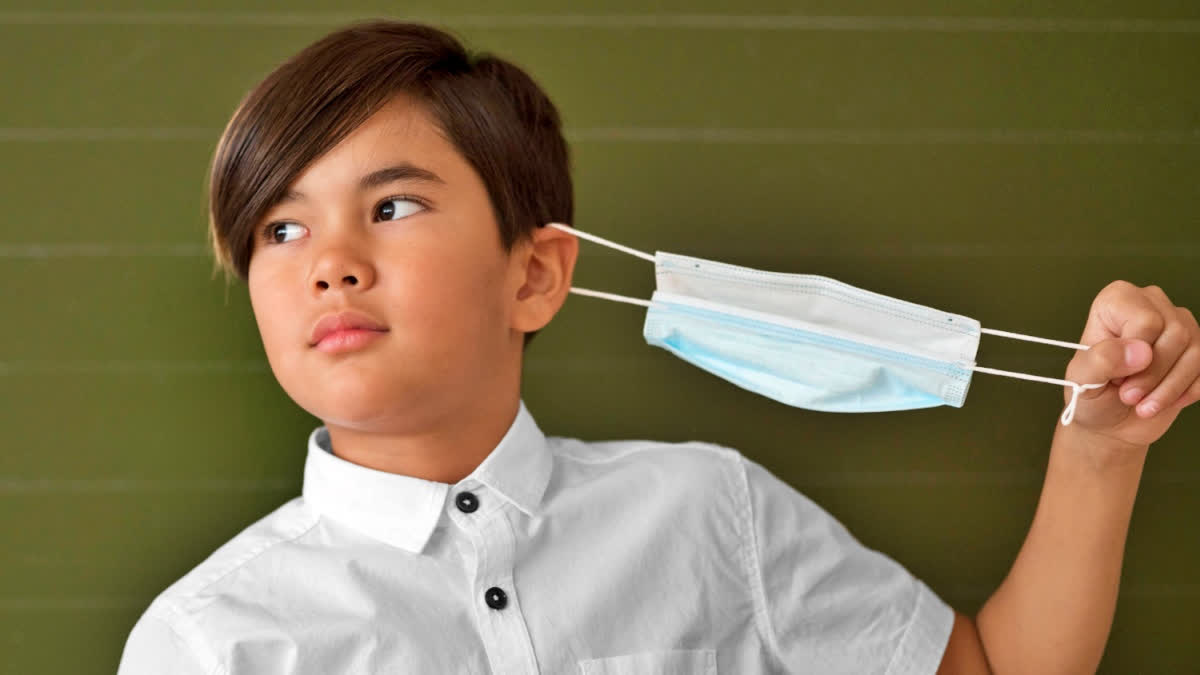As reports of a COVID-like outbreak of Human Metapneumovirus (HMPV) emerge from China, parents around the globe are understandably concerned. However, Indian health agencies and experts urge calm. Dr. Atul Goel, Directorate General of Health Services (DGHS), assures that HMPV is “like any other respiratory virus that causes a cold,” and adds that there is “no need for alarm,” while suggesting basic precautions to combat respiratory infections.
But what exactly is HMPV, and how does it affect children? The ETV Bharat Health team spoke to Dr. Zahabiya M. Bagwala, Paediatric Infectious Disease Specialist at Saifee Hospital in Mumbai about the respiratory virus. She shared essential advice for parents to protect their babies, kids and teens.
What Is HMPV?
Human Metapneumovirus (HMPV) is a respiratory virus that infects the upper and lower respiratory tract. It primarily affects young children, older adults, and individuals with compromised immune systems. Interestingly, over 90% of children show evidence of HMPV infection by the age of 5.
If your child is unwell, keep them home (Freepik) “This means most people have been exposed to HMPV at some point in their lives,” says Dr. Bagwala. “However, severe cases are more likely in infants, those with underlying conditions or during peak respiratory virus seasons.”
HMPV often circulates alongside Respiratory Syncytial Virus (RSV), especially during the winter months, as noted in the epidemiology by Kahn JS.
Symptoms Of HMPV In Children
The symptoms of HMPV can range from mild to severe and include:
- Mild Symptoms:Fever, cough, runny nose, sore throat, and fatigue.
- Severe Symptoms:Difficulty breathing, wheezing, rapid breathing, hypoxia (low oxygen levels), and asthma exacerbation.
Dr. Bagwala explains, “In some cases, especially in young children or those with underlying respiratory conditions, HMPV can progress to pneumonia or bronchiolitis, requiring medical attention.”
How Is HMPV Treated?
Unfortunately, there is no specific antiviral treatment for HMPV. The management of the infection is supportive, which means treating the symptoms:
- Ensuring the child stays hydrated.
- Providing fever-reducing medications like acetaminophen or ibuprofen under a doctor’s guidance.
- Using oxygen therapy in severe cases with breathing difficulties.
“Early medical intervention is key if symptoms worsen,” advises Dr. Bagwala.
Preventing HMPV In Children
The best defence against HMPV is prevention. Following basic hygiene and respiratory health practices can significantly reduce the risk of infection. The CDC recommends the following precautions:
- Handwashing:Teach children to wash their hands with soap and water for at least 20 seconds.
- Avoiding Close Contact:Keep children away from individuals who are sick.
- Hygiene Etiquette:Encourage them to cover their mouth and nose when coughing or sneezing.
- No Face Touching:Avoid touching the eyes, mouth, or nose with unwashed hands.
- Sanitizing Surfaces:Regularly clean surfaces like door handles, toys, and tables.
- Skip School/ College When Sick:If your child is unwell, keep them home.
“These measures are not just effective against HMPV but also protect against other respiratory viruses,” notes Dr. Bagwala.
Should Parents Be Worried?
While reports from China highlight an increase in respiratory infections, including HMPV, experts stress that the outbreak is likely localized. “The epidemiology of HMPV often trends toward a local phenomenon,” says Dr. Bagwala. “At present, there are no reported cases in India or elsewhere, so there’s no need to press the panic button.”
She adds, “What this does remind us, however, is the importance of staying vigilant, especially during the winter months when respiratory viruses are more active.”
Read more:
- HMPV Outbreak In China: How To Protect Yourself From The Virus
- Cambridge Scientists Develop A Smarter Response To Future Disease Outbreaks
- IIT Guwahati Researchers Develop Innovative Injectable Hydrogel For Targeted Breast Cancer Therapy
